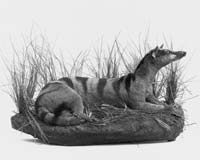Classifying corals in terms of species is a risky business. Biologist Onno Diekmann from the University of Groningen has discovered that four species of stone corals differ so little in terms of their genetic material that they can scarcely be termed separate species.
Corals are formed by a collection of identical coral polyps which together form a coral colony. Onno Diekmann compared the genetic material from six different species of coral from the Madracis genus, which are found in the co
Warming land and ocean surfaces, melting glaciers, rising sea levels, and other recent evidence strongly suggest that Earth’s climate is already changing rapidly because of the buildup of greenhouse gases in the atmosphere, according to Warren Washington, senior scientist and head of the Climate Change Research Group at the National Center for Atmospheric Research (NCAR). Computer models of Earth’s climate support these observations, he says, and indicate more severe changes yet to come.
Powerful computer models predict that winter temperatures in the polar regions of the world could rise as much as 10 degrees centigrade in the next hundred years, if no efforts are made to control production of carbon dioxide, methane and other gasses.
“With projections to the year 2100, we can show what will happen if we continue with business as usual—if we don’t do anything to curb emissions of greenhouse gasses,” said Warren M. Washington, senior research scientist for the National Cent
How will global warming affect life on Earth? Uncertainties about future climate change and the impact of human activity make it difficult to predict exactly what lies ahead. But the past offers clues, say scientists who are studying a period of warming that occurred about 55 million years ago.
In a joint project of the University of Michigan, the University of New Hampshire and the Smithsonian Institution, researchers have been analyzing fossils from the badlands of Wyoming found in a dist

Answer one of natural history’s most intractable questions
All of Madagascar’s living Carnivora (an order of mammals that includes dogs, cats, bears, hyenas and their relatives) descended from a single species that dispersed from Africa to Madagascar, apparently floating across the ocean barrier aboard wayward vegetation about 24 million to 18 million years ago. Previously, scientists believed that Madagascar’s seven living species of native Carnivora represented two to four
Highlights, including authors and their institutions
The following highlights summarize research papers in Geophysical Research Letters (GL), Journal of Geophysical Research – Solid Earth (JB), Journal of Geophysical Research – Atmospheres (JD), and Journal of Geophysical Research – Planets (JE). The papers related to these Highlights are printed in the next paper issue of the journal following their electronic publication.
1. Another Great Salinity Anomaly?